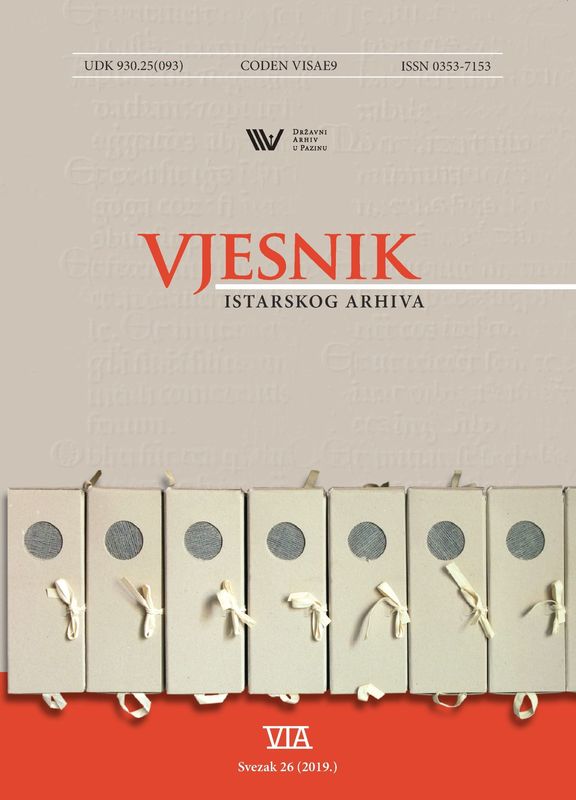“I was born in Kašćerga…”. Autobiographical and chronicle records of Antun Hrvatin (1875 – 1913)
DOI:
https://doi.org/10.31726/via.26.3Keywords:
Antun Hrvatin, Kašćerga, chronicle, genealogy, personal archival fonds, IstriaAbstract
The Personal Fonds of Antun Hrvatin (HR-DAPA-904 Antun Hrvatin: 1905/1937 [1945/1946]) consists of personal papers of a resident of the village of Kašćerga and the village of Ukotići, created over a period of about fifty years in the first half of the 20th century. This Fonds contains two of his notebooks in which he kept records of his personal history and that of Kašćerga. Autobiographical and chronicle records of the first notebook (HR-DAPA-904/1.1. Kronika (1891-1913)), covering the period from 1875 to 1913, are the subject of this article.He was therefore a literate and in his time a prominent villager who, at a crucial moment in his life, after becoming a widower and a single parent of a family with many children, speaks to a lesser extent about his and his family’s life and much more in detail about the events relevant to the life of the rural community he belonged to. His initial autobiographical narrative, fuelled by personal loss, the death of his wife, which evidently marked and concluded one period of his life, is completed by witnessing and recording events that concerned the wider community of which he was a member and contemporary. Antun Hrvatin’s public activity did not consist in the exercise of prominent/significant functions in the political, social, religious, economic, or any other aspects of the life of Kašćerga. Although he was in charge of managing the activities related to the construction of a part of the Kašćerga to Zamask road, as part of his social engagement, and was also a church doorkeeper, he was not a person whose activities left a mark in the professional or scientific literatures that covered the modern history of Istria. The publication of a part of his legacy offered an open opportunity for historians, especially those dealing with the history of rural communities and microhistory, to analyse the complex relations of the Istrian society at the turn of the twentieth century by evaluating the individual and the specific.
Downloads
Published
Issue
Section
License

This work is licensed under a Creative Commons Attribution-NonCommercial 4.0 International License.

